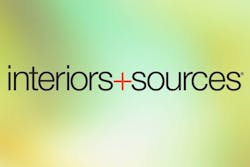Business Tips Not Taught in Architecture and Design School
Interior designers and architects learn a great deal about design, art history, problem solving and critical thinking in school. What we don’t learn is how to practice our chosen profession.
As an abject lesson, I received my Bachelor of Architecture from Pratt Institute and never even had a formal drafting class—let alone business, finance, human resources or marketing classes.
Throughout my career practicing and volunteering for IIDA and AIA leadership, there’s been a continuing discussion of the academy vs. practice. Specifically, should a student’s education be focused on how to get a job and knowing how to work, or should our education be directed toward design and design thinking—and the easy answer—both—doesn’t seem to be an option in most schools.
[Related: Students Planning Exhibit Learn More Than Interior Design]
When principals are recruiting for staff, we learn to look for certain types of employees that come from different schools, e.g. Pratt and Berkeley for designers or design thinkers vs. Cal Poly and the New York Institute of Technology for technically proficient graduates who can start billing from day one.
These typecasts are obviously an exaggeration, but they help point to the dichotomy of what we are taught in school compared to what we should be taught.
I want to provide a beginning methodology to bridge that gap.
Where to Learn
Most experienced practitioners have absorbed over their careers the non-design education that wasn’t taught in school in a variety of ways:
- Learning from mistakes
- Continuing education provided by profit-focused providers
- Courses at conferences and conventions
- Vendor lunch and learns
In addition to acquiring some critical information, these inputs can make it clearer to us what we don’t know—and it can also provide a road map for acquiring that education.
Relatively early in my career I began an effort to give back to the profession, starting with the AIA National Interiors Committee of which I was chairman, and then as international president of IIDA. Those forums not only allowed me to disseminate my experience and knowledge to younger practitioners, but also helped me acquire additional expertise.
I presented workshops at conferences to share my knowledge, then wrote a series of monthly columns on business practice and, after retiring from my firm, I started a consulting practice to help practitioners bypass the many mistakes I made and get to the finish line faster with better projects and more money in their pockets.
Ways to Gain Business Experience
Learn From Clients
One way to determine any educational shortfalls is to pay attention to your client’s roles and responsibilities. You will learn quickly that many clients are evaluated based on their ability to complete a project on time and within budget.
Ask your clients to explain how they develop the budget and it will increase your ability to assist them with cost issues during the course of a project—and help make you a trusted business advisor to them.
If you work with developers you can learn from them things like cap rates, borrowing costs, cash flow projections—all the fiscal items that make a project work and that we do not learn in school.
Inquire About What Doesn’t Seem Right
Since I never had a business class at Pratt, nor had I ever read a financial statement, I was somewhat in the dark when I started my firm. One initial task was setting up a line of credit (LOC) with a bank. I contacted a large bank to begin the process (its where I had my personal checking account), connected with a banker and got an application for the LOC.
In reading it I saw that there was a $1,000 fee per year for having the line, which I thought was odd. Specifically, I was paying for them to advance me funds for which I had to pay interest, which seemed like double dipping.
[Related: IIDA: Increasing and Challenging Diversity at University Level Needed]
I called the banker, who responded by asking if $500 would be acceptable—and a bright light bulb went off in my head. I had just learned that I could negotiate with a bank. I told him I didn’t think I should pay any fee, he countered with “How about $250?” I said, “How about nothing?” He agreed to eliminate the fee, and my firm never paid an annual LOC fee for the following 30 years.
Keep your eyes and ears open, and challenge anything that’s unclear as you navigate the business world. It will never hurt you to question and be educated.
Ask Questions
At one of my consulting clients who owns a $1.5 million gross revenue firm, I suggested we review the previous year’s accrual basis profit and loss (P&L) report along with a balance sheet.
When we met, she had prepared a cash basis P&L and I then explained that the firm was managed on an accrual basis. She looked at me sheepishly and told me that she didn’t understand the difference between the two—and this is after we had been working together for several years.
Never be afraid to show your ignorance, as without asking key questions you cannot advance your business knowledge or even understand what you don’t know and should learn.
We need to try to learn about the business of running a practice, even if you don’t plan to have your own firm. Interior design and architecture are businesses that practice design—not design businesses. When we understand business, we can move beyond just being service providers and become better partners in business with our clients.
Read next: ASID Invests in University Students Through Competition and Campus Events
Richard Pollack, FAIA, FIIDA, is CEO of Pollack Consulting, which he began after founding and leading award-winning Pollack Architecture for 28 years. Pollack Consulting assists firms’ growth and success through improved business development, winning presentation techniques, business coaching, recruiting top talent and ownership transition implementation. He can be reached at [email protected] and 415-508-6008.
